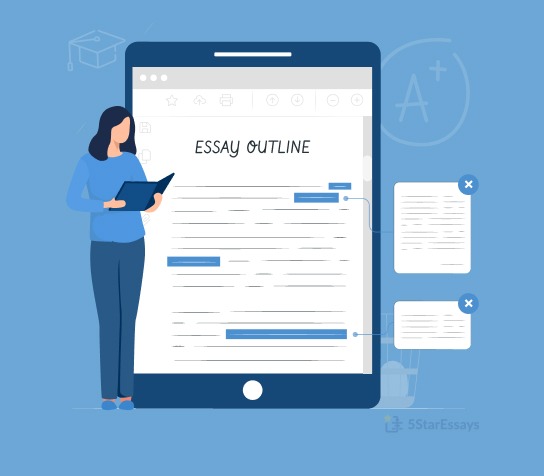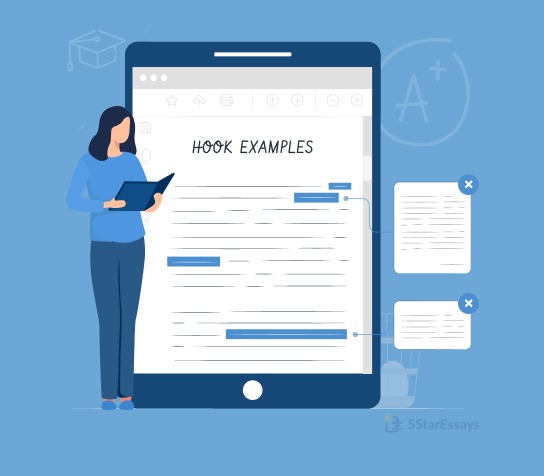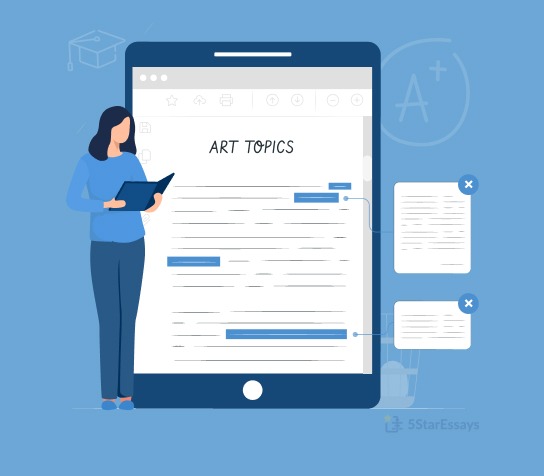When writing an essay, you must know that there is no hard and fast rule for starting it. There are four main types of essays: argumentative essay, persuasive essay, descriptive essay, and expository essay.
Similar to the different types of essays, there are several different ways to start an essay. However, the most commonly followed way is the hamburger essay method.
This method is also known as the introduction, body, and conclusion. Where the hamburger buns are the introduction and the conclusion. And the main ingredients are the body paragraphs of the essay.
Follow this method to know how to start an essay.
How to Start an Essay Introduction
“How to Start an Introduction for an Essay?”
The introductory paragraphs of any piece of writing hold the most importance. They help to grab the reader’s attention and make them decide whether or not they should invest their time. Similarly, the introduction acts as a roadmap and sets the tone for the content of the rest of the essay.
As we pointed out earlier, there isn’t a set way to start an essay. But the one thing you need to be mindful of is that your introduction should be catchy as well as informative.
To make your work interesting and attract the reader’s attention with the opening line, you must use a hook sentence.
1. Hook and Engage Your Readers
An essay hook is an opening sentence used as an attention grabber for the reader, to make them read further.
However, a hook sentence doesn’t substitute for the introduction. Instead, it opens your essay in an interesting manner. There are different types of hooks that you can use. For instance, you can begin your essay with a quote or by asking some rhetorical questions.
Depending upon the nature and topic of your essay, you can use any of the following hooks:
- Quote
- Statistics
- Anecdote
- Personal story
- Questions
- Common misconceptions
For example, if you are writing a literary essay on Anna Karenina, you start by posing a question like,
“Do you think Anna would still be in love with Alexei if she wouldn’t have committed suicide”? And then answer it in your essay.
Can’t write engaging opening lines for your essay? Here are some interesting hook examples to give you an idea.
2. Provide Some Background Information
After you have hooked the reader, the next step is to introduce the topic to your reader. Inform them about the main idea of your essay and present background information to make your topic clear.
However, make sure not to bombard the reader with extra information at this stage. You don’t want them to get overwhelmed with excess information and stop reading further. Depending upon your essay topic, your background information may include:
- An outline addressing what are you debating about
- Definition of key terms
- Summary of your research topic or theory
- Any historical, social, or geographical context.
Just give enough information to familiarize them with the whole idea of making it easier to understand. When looking for information on your topic, only use credible and authentic sources.
Performing exhaustive research before beginning writing is an inevitable part of the essay writing process.
3. Add a Thesis Statement
The last component of an essay introduction is a thesis statement. The thesis statement summarizes the entire concept and states the main objective of the essay.
The purpose of the thesis statement is to present your main claim about the topic.
A thesis statement should be arguable and not based on facts that the reader already believes in. Your readers want to read something interesting and engaging. And the only way to do that is to provide them with some new and arguable information.
A good thesis statement is arguable, defendable, as well as informative. You can learn more here about writing a thesis statement, along with examples.
Once you have successfully started your essay introduction, the next section is the body.
4. Define Your Essay Structure
Ending the introduction by signposting what will be covered in each part can give your reader a clear sense of where they are headed.
It is helpful to keep it concise and not too wordy with unnecessary information that would take away from this goal.
Example
The first part of this essay discusses the life and works of Louis Braille, who created a system for blind students to read using their fingers. It then describes how he struggled with his invention at first but was able to gain acceptance within schools around Europe by 1850. Finally, it explores some effects that were brought about after its widespread use, such as increased independence among blind people and improved literacy rates in general populations across countries where they live today. |
5. Check & Revise Your Essay
A good way to write your introduction paragraph is by waiting until the end of the writing process.
You learn more as you research, and this can change how you want to make an argument for your paper. So it’s best not to start right away with the first thing that comes out because it may be wrong later on.
After writing the essay body and conclusion, you should return to your introduction. Compare the flow of your information. Also, check if your thesis statement in the introduction coincides with justifications in your body and conclusion paragraphs.
After this, also go through your essay to figure out the grammatical mistakes and sentence structure. These seem like minor mistakes, but they can cause great damage to the overall grading of an essay.
How to Start an Essay Body?
“How to Start a Paragraph in an Essay?”
The body paragraphs of the essay hold the main content of the essay. Here you explain your point of view and present the main ideas.
The body is typically made up of three paragraphs. However, they can vary depending on the complexity of the topic and your teacher’s instructions.
The one thing that stays constant regardless of the different essay topics is that each paragraph starts with a topic sentence. The topic sentence explains the main idea of a particular paragraph, followed by the explanation and supporting evidence.
You can use factual evidence to prove your claim or different examples, statistics, and details from the text itself. All these paragraphs should work together to link back to your thesis and to prove it.
How to Start an Essay Conclusion?
The last section of an essay is the conclusion, and this is where most students go wrong. They start it abruptly and leave the reader confused without providing sufficient information.
When writing the conclusion for your essay, remember that this will be the last thing you leave your reader with. So, don’t make it vague. Use this opportunity to restate the thesis and summarize the main points.
Remind the reader why your stand on the particular topic was correct. Avoid introducing any new information at this stage.
While we have covered everything about starting your essay, to learn more about the content, here is a complete essay format.
How to Start an Argumentative Essay?
An argumentative essay is different from other kinds of essays as the writer uses it to prove his point and convince the readers of his point of view.
It clearly outlines a point, the reasoning behind it, and evidence for the reader to understand your position.
Good argumentative essays should have these key elements:
- A thesis statement that reflects what you are trying to argue or convey.
- Reasonable supporting points with examples/logic backing them up.
- Evidence from experts who can prove your claims.
Below are the steps to start an argumentative essay.
1. Create an Outline
Creating an outline is the very first step of beginning your essay, whether it is an argumentative or any other essay. It will help you in maintaining a clear focus and staying close to the main theme and topic of the essay.
2. Decide the Information You will Add in the Introduction.
Your first paragraph should introduce the topic of your essay, provide background information, and outline what evidence you will present.
In addition, this part of your paper needs a thesis statement that clearly states why readers should care about the issue at hand.
3. Formulate the Thesis Statement
This is part of your first paragraph. It summarizes the main point and claims in a concise manner, without repeating any information from the input directly.
4. Outline the Main Section of the Essay
Decide about the information that you will add and explain in the main section of the essay. Instead of having everything in your mind only, it is important that you write down everything and stick to the plan.
5. Outline the Conclusion
Make a complete and workable outline for your essay’s conclusion. Make points of the things that you will discuss in your essay’s conclusion and stay close to them.
In simple terms, make an outline of each section and make sure that you follow it completely and properly.
How to Start an Application Essay?
The college essay is not the same kind of essay that you write for your high school English teacher, so it doesn't have to include a typical intro with a thesis statement.
Many students are unaware of this fact. Just as you want to prepare answers for your college interview, here are some ways to start your essay on an engaging and interesting note.
- Start with a question.
- Begin your essay with a bold and striking statement.
- Use an engaging and relevant quote.
- Begin from the middle of the events.
- Speak with the reader directly.
Using these ways will help you write an essay that stands out from the competition.
Different Ways To Start an Essay
Now you know the essential elements to consider when starting to write your essay. Following are some of the different ways that you can consider starting your academic essay.
How to Start an Essay With a Question?
Starting an essay with an intriguing question is one of the easiest and most effective ways to get the attention of your readers.
In this way, the reader will think about the essay subject and will want to find out how the author has answered the question.
Example: "What is the appeal of pieces of jewelry? For what reason would anybody put a bonus around their neck and afterward contribute it with unique importance? An accessory doesn't bear the cost of warmth in a chilly climate, similar to a scarf, or assurance in battle, similar to networking mail; it just finishes. We may say it acquires significance from what it encompasses and sets off, the head with its especially significant material substance, and the face, that register of the spirit. At the point when picture takers talk about the manner by which a photo diminishes the truth it addresses, they notice not just the entry from three aspects to two, yet in addition the determination of a point that inclines toward the highest point of the body rather than the base, and the front rather than the back. The face is the gem in the crown of the body. Thus we give it a setting." (Emily R. Grosholz, "On Necklaces." Prairie Schooner, Summer 2007) |
How to Start An Essay With a Quote?
The internet has made it easy for us to access quotes from writers, historical figures, and scientists. Starting an essay with a quote will help in building the readers’ interest, and you can have their attention immediately.
Make sure to quote someone with credibility, and the quote is also important to have some association with your topic.
| Example: "Q: What did Eve say to Adam on being ousted from the Garden of Eden? A: 'I believe we're in a period of progress.' The incongruity of this joke isn't lost as we start another century, and tensions about friendly change appear to be overflowing. The ramifications of this message, covering the first of numerous times of progress, is that change is typical; there is. Indeed, no period or society wherein change is anything but an extremely durable component of the social landscape...." (Betty G. Farrell, Family: The Making of an Idea, an Institution, and a Controversy in American Culture. Westview Press, 1999) |
How to Start an Essay With a Fun/Interesting Fact?
The start of an essay is a great opportunity for you to start with an interesting fact or statistics. Everybody loves to read interesting and fun facts as they provide some relevant background information about the topic.
For serious essays, you can start with some shocking statistics to immediately grab your reader’s attention.
Example: "The peregrine hawk was brought back from the edge of destruction by a restriction on DDT, yet additionally by a peregrine bird of prey mating cap imagined by an ornithologist at Cornell University. Assuming that you can't buy this, Google it. Female birds of prey had become hazardously scant. A couple of contemplative guys, in any case, kept a kind of sexual standing around the ground. The cap was envisioned, developed, and afterward directly worn by the ornithologist as he watched this dillydallying ground, singing, Cheer-up! Chee-up! furthermore bowing like an over-polite Japanese Buddhist attempting to tell someone goodbye...." (David James Duncan, "Value This Ecstasy." The Sun, July 2008) |
How to Start an Essay With an Anecdote?
You can also start an essay with an engaging anecdote. Set a short story at the start of an essay that makes your reader curious and ends it by explaining the theme of the topic. In this way, the readers will read further to know more about the topic.
They will think if the starting is this much great, there is definitely something to read in this essay. Anecdote is used more in narrative and descriptive essays. Create an anecdote that stocks the central idea of a topic.
| Example: “Sitting against the scenery of stars, I then, at that point, saw the boats delicately floating on the sea, taking me back through the tides of time to my adolescence. These boats helped me to remember my own drifting excursions with my granddad and my nearby neighbor. During fishing trips we required like clockwork, my granddad consistently discussed clients and deals from his business, acquainting me with the universe of financial matters and money.” |
How to Start an Essay Examples
Mistakes To Avoid When Starting an Essay
Following are some of the things that you should avoid if you want to start an essay in the best possible way.
- Never start with a definition from a dictionary
The definitions taken from dictionaries or even websites are quite obvious and boring. Other than that, teachers do not recommend using such open-source encyclopedias.
- Avoid writing a broad and generalized introduction
Set a timer and watch whether your introduction is more than 25-30 seconds long. If it is, then make it short.
If you are still facing difficulty or you’re finding yourself stuck in writer’s block, professional ‘make my essay’ service providers at 5StarEssays.com can help you out.
Whether you need help perfecting a rough draft or need an essay written from scratch, just reach out to our professional writers. They will handle everything for you!





















